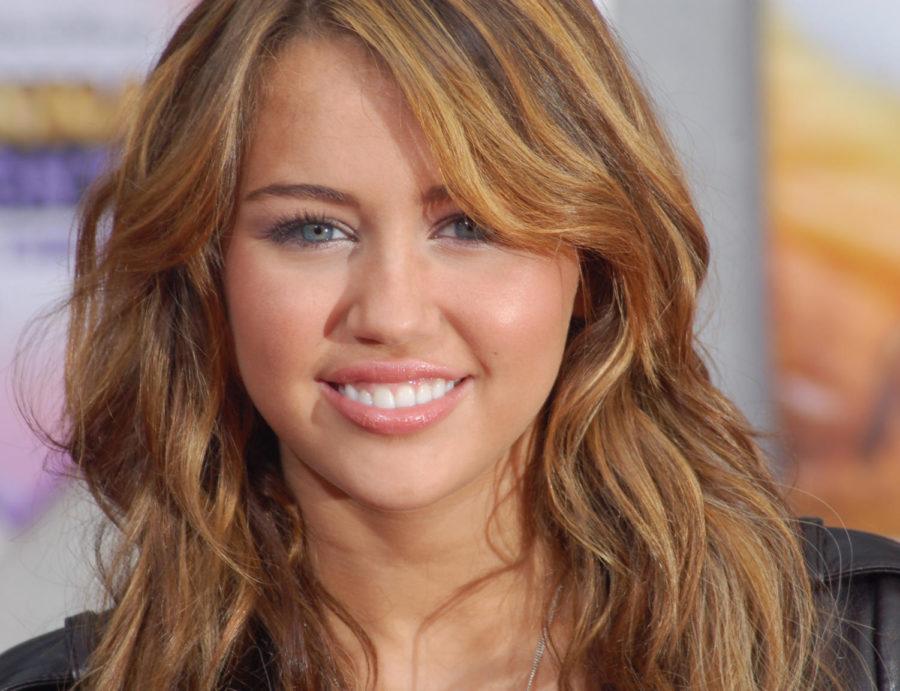Neuendorf: Let’s give Miley Cyrus a break — sort of
Seven years ago, Disney fabricated a tween generation’s role model, and now, seven years later, the face of that character has become a target of relentless criticism and slut-shaming.
September 23, 2013
Seven years ago, Disney fabricated a tween generation’s role model, and now, seven years later, the face of that character has become a target of relentless criticism and slut-shaming.
Of course, the character is Hannah Montana and the face belongs to Miley Cyrus, who recently has twerked her way into headlines and the mind of every media-aware being in the country. Not only is it reprehensible that more Americans could lecture on about their personal opinions on a 20-year-old pop star than serve up a few key points on the Syrian conflict — but those opinions are orbiting around a central theme of bullying and mockery.
Let’s start at the beginning of this Disney pop-star turned faux hip hop-star fairytale: Miley, at the youthful, mistake-ridden age of 13, was cast as an average teen who moonlighted as a singing sensation and led a normal life starting in the morning. With a strong work ethic, respectable family values, Miley Stewart/Hannah Montana, and consequently Miley Cyrus, filled the void of the parent-approved role model for tweens everywhere.
Soon, Cyrus evoked controversy that Stewart wouldn’t even fantasize about in her naughtiest day dreams — including a snapshot of her budding sexuality spread across Vanity Fair. Almost a year later, a photograph of Miley pulling her eyes apart doing “Asian eyes” showcased Miley’s questionable racial sensitivity. As a result of these incidents, parents everywhere began loathing the way their children’s role model was growing up.
All of a sudden, Cyrus switched from tween-idol to the poster child for child-gone-awry. Basically, she was being branded as light version of Lindsay Lohan, yet even more terrifying because this coming-of-age transformation was frighteningly realistic for little girls everywhere. After TV show and pop-star Hannah Montana ended, Cyrus took predictable and safe stepping stones throughout her career to maintain a position in the peripheral of the public eye.
Occasionally, pictures and rumors of Miley doing drugs would sprout from sleaze-sites, and I wouldn’t be surprised if this inspired a few moms to check their kids’ drawers to ensure their children weren’t growing up sipping that Lohan-lite.
With a few snips and hair dye, Miley no longer danced on the outskirts of attention, but strutted to the forefront of the world’s eye with a hair cut that screamed: “I’m a rock star. I’m edgy. I’m a bad girl.” An uproar of opinions came hurling in Miley’s direction declaring her ugly and crazy, all while the daggers of slut-shame were being sharpened by the harshest mud-slingers.
Amid the “We Can’t Stop” phenomenon — first, the song with lyrics about strip clubs, then the video with imagery of a happy tongue and booty-shaking via Miley, and the already-engraved-in-VMA-history performance that spotlighted Miley’s sexually explicit writhing negativity and the scorning of Miley’s twerking and attention-hungry antics became a norm among anyone with a voice on the internet (aka everyone).
When the current generation of little girls witness grown-ups and the media dehumanizing Miley in a regular, sexist manner, what says they won’t take the persistency as the OK to go treat each other in a similar fashion. The over-sexualization she bleeds shouldn’t be ridiculed or embraced, for either direction could falter into the very shallow territory they are criticizing. I’m not saying the subject should go ignored but suggesting it be viewed under a more critical, larger picture lens.
Let’s flip the coin of controversy and focus more on the underside, the twerk-less messages she doesn’t intend on sending and the buried issues that should be most relevant in culture. For example, the drug references (“dancing with Molly” and “doing a line in the bathroom”) Miley croons in the “We Can’t Stop” verses go uncensored on most radio stations.
Probably the most distressful issue is put in full throttle within her video and VMA performance — her restless racial appropriation. The way the pop-star uses black women as props of sexual acts — particularly that time she lodged her face into the rear of a black woman on stage. The topic of her seemingly-purposeful placement of black women around her for her own selfish attention-grab never sees a headline because it’s easier to call Miley ugly, crazy and a slut. It is indisputable that Miley aims to ruin her young tween idol status, but slut-shaming, open-ridicule and hate aren’t a solution and only serve to confuse children.
The storm of slut-shaming brewed again with the release of her “Wrecking Ball” video, which captures Miley swinging to and fro in the buff atop a — spoiler alert! — wrecking ball. Sledgehammer-licking and her melodramatic-acting also co-star, but why do we care so much?
Maybe it is because the cultural chorus of criticism is as catchy as her signature pop hits, or maybe because the media has fallen too in love with escapism from real-world issues or maybe it is because we continue to accept and fuel sexism by way of rude slut-shaming. Whatever the reason, we can stop, and we should stop.







